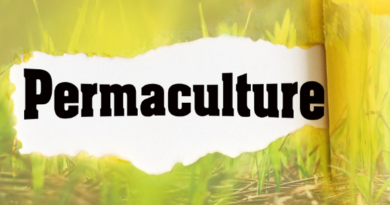Unlocking the Secrets of Your Soil: Understanding and Using Your Soil Test Report
Soil testing is a crucial step in maintaining a healthy garden or farm. By determining the pH, fertility, and chemical makeup of your soil, you can ensure that your plants have the proper nutrients to thrive. We recommend that gardeners and farmers have their soil tested every 2-5 years.
The soil test report will provide specific recommendations based on the crop you have identified in your soil submission. In this article, we will go over the different values found in a soil test report and explain how they affect plant growth.
Phosphorus (P) is essential for the genetic material of plants and helps them use energy from photosynthesis. Soil phosphorous can exist in a range of forms, some of which become available to plants as organic matter decomposes. Low phosphorous levels can inhibit or prevent shoot growth and cause leaves to turn dark and dull. High phosphorous levels can support the growth of crops like tomatoes.
Potassium (K) is another important nutrient that is absorbed in large amounts by plants. Low potassium levels can cause plants to wilt and become susceptible to disease.
Calcium (Ca) is necessary for the proper functioning of plant cell walls and membranes. Low calcium levels can cause symptoms like small, crinkled leaves and brown or dark veins.
Magnesium (Mg) is held on the surface of clay and organic matter particles and is necessary for photosynthesis. Low magnesium levels can cause colour loss and yellowing of leaf veins.
Sulphur (S) is a component of enzymes that regulate photosynthesis and nitrogen fixation. Low sulphur levels can affect the growth of grains, fruits, vegetables, and pasture crops.
In addition to these macronutrients, soil tests also measure levels of micronutrients like zinc, copper, and iron. These micronutrients are necessary in smaller amounts but are still essential for plant growth. By understanding the results of your soil test, you can make informed decisions about fertilization and crop selection to ensure a bountiful harvest.
Interpreting The Results
The first step in interpreting soil test results is to understand the different types of tests that are available. The most common tests include pH, nutrient analysis, and texture analysis.
pH: The pH level of the soil is an important factor in determining its fertility. A pH level of 7 is neutral, while a pH level below 7 is acidic and a pH level above 7 is alkaline. In Kenya, most crops prefer a pH level between 6 and 7. Soil that is too acidic or alkaline can lead to nutrient deficiencies, which can affect crop growth.
Nutrient analysis: The soil test results will also provide information about the levels of various nutrients in the soil. These include nitrogen, phosphorus, and potassium, as well as other micronutrients. The test results will indicate whether the soil is deficient in any of these nutrients and if so, the right fertilizers to be applied.
Texture analysis: The texture of the soil is also an important factor in determining its fertility. Soil texture refers to the proportion of sand, silt, and clay in the soil. In Kenya, loamy soils are the most suitable for crop production. Loamy soils have a good balance of sand, silt, and clay, which allows for good water retention and drainage, and easy root penetration.
Based on the test results, farmers can make informed decisions about how to improve the fertility of their soil and what types of crops to plant. It’s essential to work with a reputable laboratory and a professional agronomist to interpret the results.
References:
- “Soil Testing and Fertility Recommendations for Field Crops in Kenya.” International Plant Nutrition Institute, www.ipni.net/publications/kenya-soil-testing-fertility-recommendations-field-crops.
- “Soil pH and Crop Production in Kenya.” Kenya Agricultural and Livestock Research Organization, www.kalro.org/index.php/publications-mainmenu-58/technical-bulletins-mainmenu-59/item/874-soil-ph-and-crop-production-in-kenya.
- “Soil Fertility Management in Kenya.” Ministry of Agriculture, Livestock and Fisheries, www.agriculture.go.ke/index.php/extension-and-advisory-services/soil-fertility-management.




